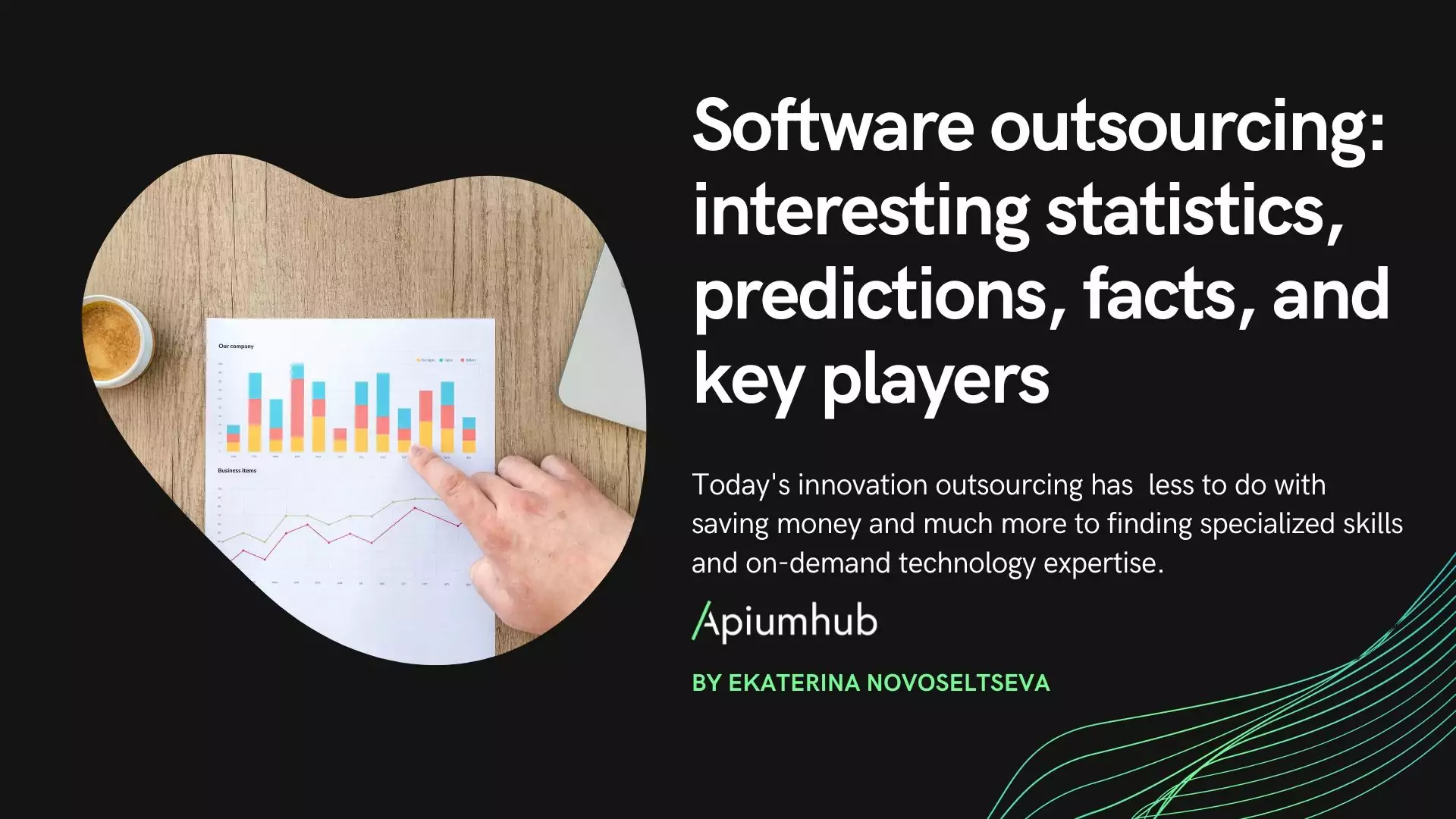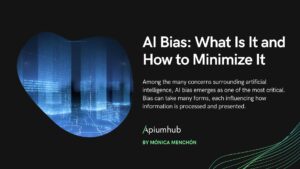Table of Contents
Companies across the globe are going through digital business transformation as they are challenged to improve business processes and develop new opportunities and business models. Digitization can extend the reach of organizations, improve management decisions, and speed the development of new products and services. At the same time, rapid adoption of technologies can disrupt traditional business models.
I am pretty nowadays everyone knows what it is, but let’s go over the most important aspects of digital business transformation. Digital business transformation is the profound and accelerating transformation of business activities, processes, competencies and models to fully leverage the opportunities of digital technologies. In other words, it is the use of technology to radically improve performance. It is a hot topic for companies across the globe. Executives in all industries are using digital advances such as analytics, mobility, smart devices, etc. to improve their use of traditional technologies, in most of the cases it is done to improve customer relationships, internal processes and value propositions. Data and information have become core business assets, sources of revenue and critical enablers in the information age.
In order to leverage the possibilities of new technologies, the next stage in that information age and the digital business transformation, organizations need to be ready for accelerating evolutions, business agility, customer-centricity and all forms of data analysis.
Top 10 digital business transformation trends
1. Fast Adaptability
Modern companies succeed when they adapt to industry and marketplace shifts and incorporate new technology into company culture and regular operations. And digital business transformation isn’t only about technology, it’s about bringing together the power of technology with a culture that embraces the change that it can lead for the organization.
2. Rapid Innovation
Proactive innovation is one of the best ways to stay competitive in an evolving world. New technology needs to be assessed, tested, analyzed, and judged more quickly than ever. Businesses can no longer afford to waste a lot of time and resources implementing new tools that offer no real value. This means a “Fail fast, to succeed faster,” mentality. The faster your organization can go from idea to implementation the more it can embrace opportunities to transform and even disrupt markets and internal business models.
3. Remote workforce
Young professionals prefer flexibility to compensation. Now, technology allows businesses to connect with top talent anywhere in the world and give this opportunity to work remotely for people who need it, ability to work from home or while being in another country.
4. Big data & analytics
The importance of big data in the business world can’t be ignored, nowadays it is a must, a key for success. We know that there’s a huge amount of valuable data in the world, but few companies are using it to improve the results, to improve their strategies. Analytics drive business by showing how your customers think, what they want, and how the market views your brand. In the age of digital business transformation, almost everything can be measured. Today, every important decision can and should be supported by the application of data and analytics.
5. AR & VR
The booming success of the Pokémon GO AR app is a wakeup call to any business that hasn’t evaluated the potential of AR and VR. Now easier to implement than ever before. The mainstream shift toward AR and VR provides new ways to connect with customers and offer unique, memorable interactions. The popularity of AR and VR also open up the gates for workplace gamification. There will be a strong roadmap for incorporating gaming into the workplace along with VR and AR for improved employee engagement, retention and customer experience.
6. AI
Step by step, machines start learning and start adapting to their environments. While advanced learning machines may replace low-skill jobs, AIs will be able to work collaboratively with human professionals to solve intensely complex problems.
7. IoT
Nowadays, IoT offers great insight into customer’s mind. With an estimated 200 billion “Things” on the Internet by 2030, it is no question that IoT will be not only transformative, but disruptive to business models.
8. Destroying silos
The roles in the companies change a lot, especially the role of the CIO. Today, you can find jobs that didn’t exist last year and they continue to appear every quarter. Now you have such new positions as Chief Digital Officer, Chief Customer Officer, Chief Strategy Officer, Human centered innovation manager, Digital business transformation manager, and many others.
I believe that these new trends and technologies will be at the core of digital business transformation efforts and many will continue beyond the next year. There is no question that digital business transformation is no longer an option as the need to build an organization that can change both its technology and its culture rapidly. It is key not only for surviving in the time of business disruption, but building a business model that is agile.
I found very interested statistics, that I am sure you will find interesting.
Digital business transformation statistics
- 87% say that Digital Transformation is a competitive opportunity.
- 88% of companies report they are undergoing digital transformation
- 96% of organizations see digital transformation as critical and important.
- 85% of enterprise decision makers feel they have a timeframe of two years to make significant inroads on their digital transformation before suffering financially or falling behind their competitors.
- Only 50% of executives strongly agree that their organization has a clear and coherent digital strategy.
- Digital transformation initiatives are currently led by different individuals: CMOs – 34%, CEOs – 27%, CIOs or CTOs – 19%, CDOs – 15%, CXOs – 5%.
- 39% say their digital transformation efforts have helped them make strong progress in enabling real-time transactions; 32% say it has helped them make strong progress in improving the efficiency of operations; 28% say it has helped them acquire new customers, 25% say it has helped them make strong progress in accelerating product development.
- 45% of executives expect digital to grow their revenue, and 25% of executives expect digital to create better customer experiences.
- 87% of businesses expect digital transformation to have positive impact on employee experiences when working at the company as well as on employee productivity
- 71% of digitally maturing companies say they attract new talent based on their digital vision.
Companies which already went through digital transformation claim that these are the following benefits they got from it: increased market share – 41%, increased customer engagement in digital channels – 37%, more positive employee morale – 37%, greater web and mobile engagement – 32%, and increased customer revenue – 30%. - 31% of digital teams rely on external partners to deliver their technology needs.
- 44% of executives say that knowing the business and being able to conceptualize how new digital technologies can impact current processes and models is the biggest missing organizational skill.
- 31% of businesses say they are investing more than 15% of revenue into technology investments that span all areas of the business, not just IT.
- 68% of technology spending is now coming from budgets outside of IT.
- The three biggest disruptive technologies are cited by global respondents to be cloud – 58%, mobility and collaboration – 54%, data – 52%.
Inspiring Examples of Digital Business Transformation
1. McDonald’s
McDonald’s has recognized a massive shift in consumer behavior and they are trying to adapt by digitally transforming their restaurant experience and company processes. For example, they began installing kiosks where customers can quickly customize their hamburgers. They were one of the first companies to adopt Apple Pay mobile pay and they are known to consistently look to startups for new innovative solutions, such as a company that embeds sensors into paper, etc. McDonald’s continues to focus on integrating technologies so they can be more agile, experimental and collaborative.
2. Under Armour
Under Armour wanted to become much more than an athletic apparel company when they introduced “connected fitness” – a platform to track, analyze and share personal health data right to customers’ phones. They acquired several technology-based fitness companies like MapMyFitness, MyFitnessPal, and European fitness app Endomondo for $715 million. These companies provided UA with the technology and a large customer database needed to get their fitness app up and running. This new application provides a stream of information to UA and that enables them to immediately identify fitness and health trends. For example, Under Armour, which is based in Baltimore, was able to immediately recognize a walking trend that started in Australia. This allowed them to deploy localized marketing and distribution efforts way before their competitors knew what was happening.
Connected Fitness has also created a customer experience that is tailored to each individual consumer. The average running shoe breaks down after 400 miles and running with worn shoes increases the chances of injury. Under Armour notifies their customers when they have run over 400 miles and then they offer the customer new products based on their behavior and purchase history. This concept has been applied to other UA products like hiking boots.
Under Armour plans to continue their quest for developing new technologies.
3. McCormick & Company
McCormick & Company is a 125 year old spice company that recently realized the need to digitally transform in order to remain a market leader in the modern world.
McCormick launched FlavorPrint, an online flavor recommendation tool that visually represents consumer’s tastes. Consumers start with a 20 question quiz about eating habits and food likes and dislikes. FlavorPrint takes this data and generates personalized suggestions about recipes using algorithms. It has been dubbed “the Netflix for food” for its ability to suggest recipes based on individual’s tastes.
4. Disney
Several years ago, Disney World was faced with a declining rate of customer satisfaction. That year, Walt Disney Co. CEO Bob Iger gathered the board of directors and pitched his plan for MyMagic+, a billion dollar investment aimed at improving the Disney World’s customer experience. MyMagic+ consists of a website, mobile app and wristband that allows Disney to track and analyze customer behavior so they can create a personalized and seamless Disney World experience for their customers.It allows customers can book and plan out their Disney World itinerary months in advance. Once they book their reservations, customers are shipped their MagicBands which have radio frequency identification chips built in. This wristband serves as a hotel room key, admission ticket, wallet and a FastPass. The wristband collects all this data for Disney’s new “vacation management system” where Disney tracks guests in real time. For example, when Disney identifies long lines they will send over Mickey Mouse to boost morale and also ping customers in line with promotions to other less crowded areas. These wristbands also let Disney characters know if it’s a child’s birthday so they can give them a unique birthday greeting. The MyMagic+ initiative involved the training of over 70,000 employees on new technology, installing radio frequency readers on over 28,000 hotel room doors and adding scanners to the Park’s hotels, shops, and other attractions. One billion dollars later, the initiative has proven to be a success. Customer experience has been on the rise and over 90% of visitors rate the magic band as “very good” or “excellent.”
5. Tesla
Now, we are seeing companies like Tesla incorporate technology into their vehicles that essentially make them computers on wheels. Cameras. Sensors. GPS. Self-driving vehicles. Syncing your smartphone with your car. One of the features that clients like, is that Tesla texts them to say, that based on traffic, they need to leave in five minutes to get to their next appointment on time.
Actually, Tesla is a perfect example of digital transformation. What Tesla made, was – the investment to take its automated assembly robots and allow them to not only put together cars, but to incorporate the most up-to-date technology in those cars. Moving forward, Tesla will then use the data collected from the technology in their cars to not only improve the next version of that vehicle, but to refine and reduce the cost of manufacturing.
6. Trelleborg
Danish manufacturer Trelleborg, which makes precision seals for engine components, machinery and underwater structures, has to fulfil complex orders ranging from one to millions of units. Lack of space and agility was causing decreased market share, so the company transformed its business with the help of 42 collaborative robots. The robots have allowed Trelleborg to improve product quality, reduce the number of human operators required for each manufacturing machine from three people to one, fit more machines into the available space and become dramatically more price competitive. Within two years, the company had become so agile that its business picked up dramatically, resulting in the need to hire 50 new people to keep up with demand.
7. Leeds City Council
Cash-strapped public-sector organizations have problems with leveraging the digital revolution as they don’t have the budget to invest in the latest technologies. Leeds City Council’s answer was to adopt an open data model, releasing as much data as possible openly in machine-readable formats and providing a platform for people to develop compelling applications based on the open data. The Leeds Data Mill has accelerated the creation of a raft of new digital services for local residents that would have otherwise been unaffordable, such as the Leeds Bins app for iOS and Android devices that allows residents to quickly and easily query information about collection dates, recycling and waste management.
8. John Lewis
Retail is one of the most active sectors when it comes to digital transformation, but John Lewis has gone one step further than most by creating a startup incubator, JLab, to leverage the creativity and entrepreneurial dynamism of the most promising new retail tech innovators. The incubator selects five start-ups each year and helps them bring their technologies to market. Among this year’s stars is DigitalBridge, which has developed a clever ecommerce website addon that allows shoppers to snap photos of their rooms and see what furniture and other products would look like in their own homes. It automatically detects walls and floors and creates a photorealistic virtual representation of the customer’s room, in which lighting and decor can be changed, and products can be placed, rotated and repositioned in full, realistic perspective.
9. Sabadell
Banking has changed dramatically in response to the evolving expectations of consumer and business customers. From mobile to social media, banks have had to respond with easy-to-use technology solutions that work the way consumers want. Banco Sabadell added new instant payment platform, which is an industry platform in Spain for instant payment, person-to-person. They integrated that immediately into their wallet platform and into our digital capabilities like electronic signature, fingerprint lock-on. Also, they organize a hackathon. It is very successful. A lot of ideas come out of that.
Source of the case studies: 100tb
If you find it interesting, I highly recommend you to subscribe to our monthly newsletter to receive latest trends and news in the technology industry.
If you found it interesting, you might like…
Digital identity trends & startups to watch
Blockchain technology: use cases, statistics, benefits, startups & events
Digital Twin as a strategic technology trend
The concept of datafication: definition & examples
Virtual reality technology: main trends, statistics & startups
Barcelona – one of the best smart cities in Europe
Best entrepreneurship books to read this year
NLP projects & start-ups to watch this year
Author
-
Ekaterina Novoseltseva is an experienced CMO and Board Director. Professor in prestigious Business Schools in Barcelona. Teaching about digital business design. Right now Ekaterina is a CMO at Apiumhub - software development hub based in Barcelona and organiser of Global Software Architecture Summit. Ekaterina is proud of having done software projects for companies like Tous, Inditex, Mango, Etnia, Adidas and many others. Ekaterina was taking active part in the Apiumhub office opening in Paseo de Gracia and in helping companies like Bitpanda open their tech hubs in Barcelona.
View all posts










4 Comments
Jennifer Fernando
Awesome post. Thank your for sharing such a nice article.
Nathan Bradshaw
Nice article about digital transformation, as a marketing manager at fraction tech I have few point related which every business should consider.
Business transformation is predicted to be a huge initiative for companies come 2019. — DXC, 2018
Trends like next-generation IoT platforms, cloud disruption, and data center shutdowns are leading the business transformation movement. — DXC, 2018.
The power of a digital transformation strategy lies in its scope and objectives. Less digitally mature organizations tend to focus on individual technologies and have strategies that are decidedly operational in focus.
williyamhunter
Good Information,Thanks For Sharing.
Dale Garlett
Selling fast